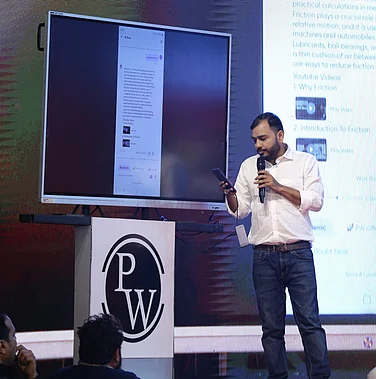With 15 months of campuses being closed and online learning being pursued, edtech push by Covid is now stronger than the fintech push by demonetisation. The teacher-student model has ceased to exist for ever now, and we are moving to a qualitatively different mentor-learner model not just in the current digital learning phase, but also in the post pandemic times ahead. Beyond this complete campus lockdown phase, during which time mentoring-learning-assessing has gone online globally, we shall be moving towards blended phygital education ahead, which will be the new normal ahead, and will make the new model of mentor-learner firmly entrenched.
Advertisement
Learning or academics or education broadly has three functions: creation of learning content through research, writing, packaging with visuals; dissemination of learning through classes, lectures, notes, self-study, discussions, assessment and evaluation of the education of the learner by various methods. All these three have been majorly impacted by the self-isolation imposed to ensure social distancing so that the learners and the mentors may first be protected from the spread of the infection of Covid-19. The lockdown across the world is simultaneously a boon and a bane for the teaching-learning community today.
Teacher to Mentor
The teacher was a sage on the stage, introducing every new topic, speaking the last word on it, sticking to a structured syllabus as prescribed, interpreting it as s/he deems right, finishing the syllabus and focusing on examination and evaluation to complete the cycle of delivery of education. He often demands respect, and relies on the power to punish to set things right (not always, though). Teacher teaches and often sermonizes.
Advertisement
Each premise noted above is changing now.
Mentor today is a co-learner, may be the first stimulus for a topic but never the last word, starts from a structured syllabus but is expected to move towards organic learning depending upon the variegated interest areas of groups of learners, aggregates learning resources from multiple sources and shares with the learners, is more a guide, second parent and agony shelter of sorts for the learners. Examination also is diverse and evaluation is just one more function and not the ultimate yardstick of learning and brilliance of the learner. Mentor may often be less informed about an issue, but with a better perspective to guide. Mentor engages and inspires.
Learning Resources Aggregation & Delivery
To begin with being the new age mentor, a massive train the trainer and capacity building is needed today. For this, first the mentor has to be a digital personality with smartphone and net connection, and with laptop and WiFi connection. Next, one has to learn how to create, deliver and engage in content across multiple online platforms, and how to take matter learnt online to matter practiced offline face to face. Third, one has to now learn assessment with open book through analysis and application, through quiz, through applied projects, through phygital presentation and actual work in labs and studios after using virtual labs and studios.
Advertisement
Creating the learning resources was quite easy earlier. There were the books, often called text and reference books, then the power-point presentation of the teacher, and then chalk and talk. And the topic was first introduced in a class, post which notes were given, books were mentioned, and later examination was conducted to check memory and a bit of understanding.
The game is changed now. And totally so.
The concept of proprietary content (the mentor’s own videos, audio or podcast content, power-points, cases, info-graphics etc), aggregated content (books, monographs, videos, podcasts, URLs, PDFs, cases, etc taken from the internet, YouTube and Vimeo, etc), and also massive open/closed online learning resources (free ones like Swayam or NAPTEL, paid ones like those of Coursera or LinkedIn, and the university’s own online courses): these three are the learning resources today.
Advertisement
The mentor is expected to make a mix of proprietary, aggregated and online learning resources, suitably arranging them from the easies one to the toughest one and offer to the learners digitally (using Google Class, emails, or better, Learning Management Systems like Canvas or TCSion, Blackboard or Collaborate, etc,) at least a week or more before they meet digitally or physically to discuss the content. This is called Flipped Classroom where the learners get learning content much in advance, read, watch or listen to the same asynchronously at their own time, place or pace, note down things they have not understood or have questions on, and come to the digital/physical classroom synchronously, to clarify doubts, discuss cases, debate on conclusions drawn and participate in quiz or analytical or applied assignments. Delivery of the online session can be on any platform: MS Teams, Zoom, Webex, Google Meet and can move from the synchronous digital classroom to asynchronous digital chatroom debates and discussions for further clarification.
Advertisement
This makes the task for content creation and content delivery for the mentors much more diverse, tech-savvy, and tougher than the traditional teacher’s job.
The author is the Pro Vice-Chancellor of Adamas University, and earlier the Media Dean of Symbiosis and Amity Universities.
DISCLAIMER: Views expressed are the author’s own, and Outlook Money does not necessarily subscribe to them. Outlook Money shall not be responsible for any damage caused to any person/organisation directly or indirectly.















 Just one email a week
Just one email a week